For Warriors' Draymond Green, each possession vs. Cavs defense is a test
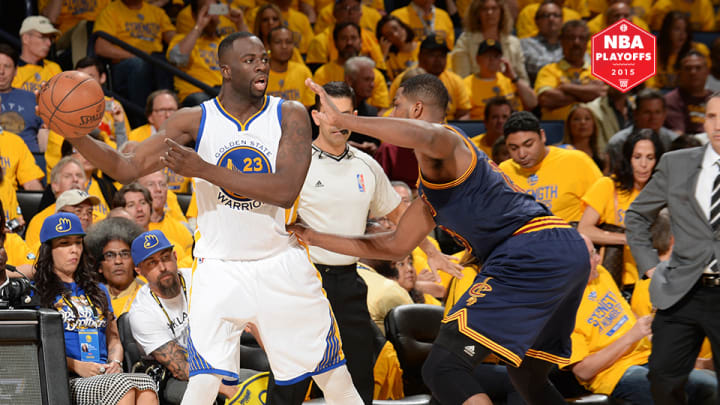
The Cavaliers have defended so deftly and so tenaciously in the NBA Finals as to wedge doubt into all that the Warriors do. Anytime Golden State triggers one of its base sets or usual actions, it finds hands stretched into passing lanes and bodies standing in the way of cuts. Whenever Stephen Curry or Klay Thompson finds a clearing, they’re urged to rush for fear of impending pressure. Steve Kerr has at his command one of the most prolific offenses in basketball. Yet every possession feels as if the walls are closing in, a claustrophobic reality that now has his team at a 2-1 series deficit.
Of course, teams like the Cavaliers can only manufacture a smothering front at some expense. A double team leaves a potential scorer wide open. A hedge on the pick-and-roll creates a clear passing window. That Curry and Thompson are seeing all kinds of pressure in this series means that their teammates, by the simple calculus of five-on-five basketball, are not.
- MORE NBA: 'MVP Curry' needed | Lee backseat | Schedule | Coverage
Some of this is to be expected. Opponents throughout the season have trended away from manning Andre Iguodala, Andrew Bogut, and Shaun Livingston with tight coverage. More striking is Cleveland’s collective shrug toward Draymond Green—the pressure-release forward who has so much open air that he doesn’t know what to do with himself.
Steve Kerr: The Warriors' Ringmaster
Curry has not played particularly well in this series. Green, who has played through back spasms, is at least part of the reason why. The Warriors have survived scoreless performances from Andrew Bogut, shakier games from Harrison Barnes, and (though it hasn’t been the case in this series) reluctant shooting nights by Andre Iguodala. They’ve done so because Green could consistently project as a threat. His intersecting ability to shoot from three, counter drive against a scrambling defense, and pick out open teammates with sharp passes made him a challenging cover for most power forwards.
Cleveland has managed by, instead, not guarding Green much at all. Any screen he sets for Curry turns into a two-man containment of the MVP. Green, across the floor, flounders in space. The shots that Green takes have been duds; he’s made just one three-pointer in eight attempts during the Finals thus far.
It’s the potential shots that Green passes up, though, that have turned out to be the silent killer of the Warriors offense. Green has become so unsettled in his perimeter game that he would rather drive chest-first into Timofey Mozgov than bomb away from outside. Those sequences have unfolded as one might expect:
What Green is trying to do is clear and understandable. Basketball players at all levels are told that the way out of a shooting slump is to the rim, and Green has generally been terrific in attacking opposite a Curry trap. That Mozgov lies in wait simply takes away the possibility of Green working all the way to the basket. This has resulted in a few different outcomes, none of them preferable. Green may begin his drive before balking:
Force up a runner that really isn’t part of his game:
Or try to kick out to a teammate, which has been discouraged by the way the Cavs have zoned up the weak side of the floor and been a presence in the passing lanes. There are ways for Green to read the situation more effectively, and to be fair he is playing his way through a back injury that may be a nag on his shots and drives. But Cleveland has schemed him out perfectly by capitalizing on his spotty shooting of late, prioritizing Curry, and trusting Mozgov to do what he does best.
No hyperbole: LeBron James on brink of greatest Finals performance ever
Between these last two playoff rounds, the Cavs have made a compelling case that the perceived threat of a stretch big may not quite measure up to reality. Cleveland wasn’t all that concerned with the three-point range of Atlanta’s Paul Millsap, a 35.6% shooter this season, in the Eastern Conference finals. Millsap shot 1-for-9 from long range in that four-game series. Now Green, a 33.7% shooter, is being put to the test on possession after possession. Both of those players are still quality long-range shooting options by the numbers. The way they’re forced to take shots, though, adds a layer of self-consciousness that complicates the proceedings.
This was the kernel of truth in J.R. Smith’s incredible comment about disliking open shots earlier this postseason. There’s a pressure on those attempts that can get to a shooter. One can tell by his pained hesitation that they’re getting to Green. Golden State’s offense is flexible enough—and its coaching staff resourceful enough—to eventually find a way around these kinks in execution. Any solution will demand a more confident Green, willing to either take the shots the percentages say he should or participate in the kind of facilitation that might find those shots for others.
Sports Illustrated's best photos from Game 3
SI's Best Photos From Game 3 of the NBA Finals
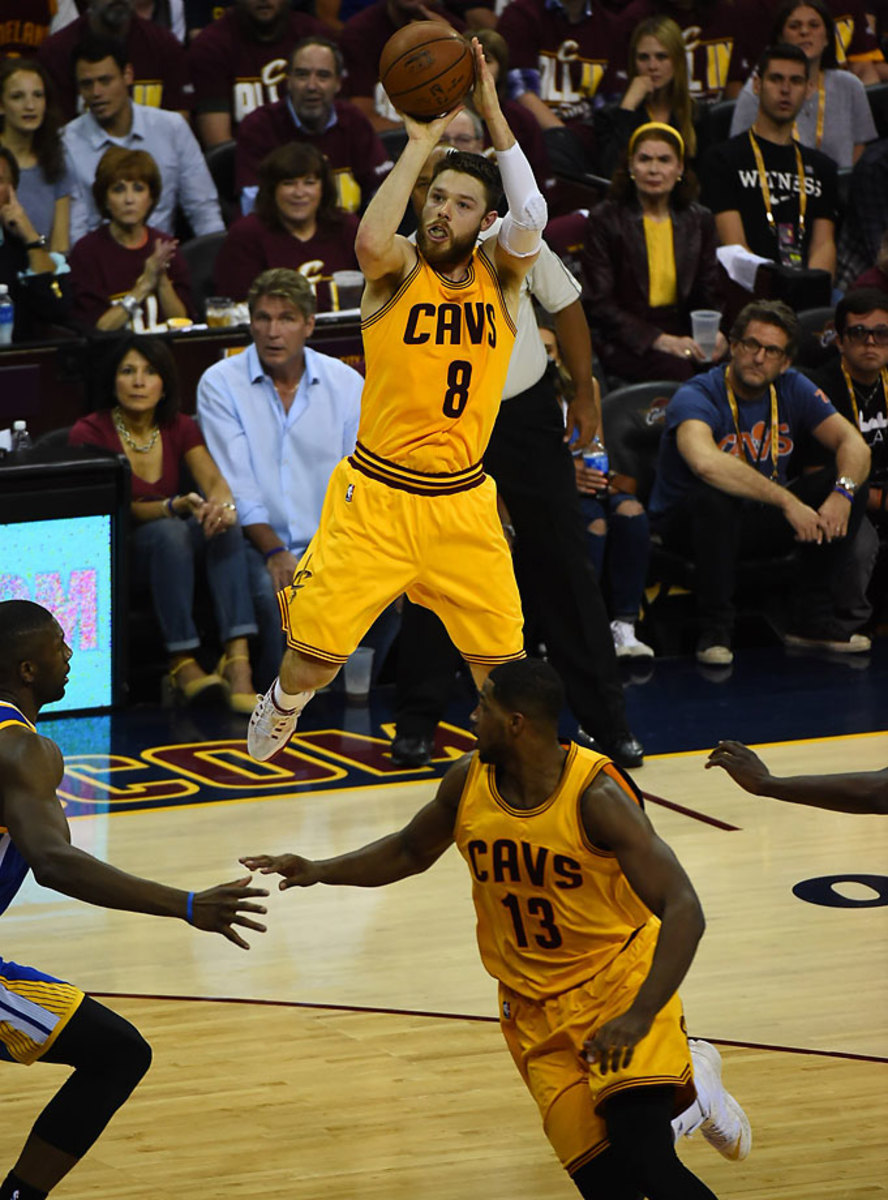
SI's Best Photos from Game 3: Matthew Dellavedova rose to the occasion again for the Cavaliers in Game 3, scoring 20 points and making several hustle plays to help Cleveland win 96-91 to grab a two games to one lead in the NBA Finals.
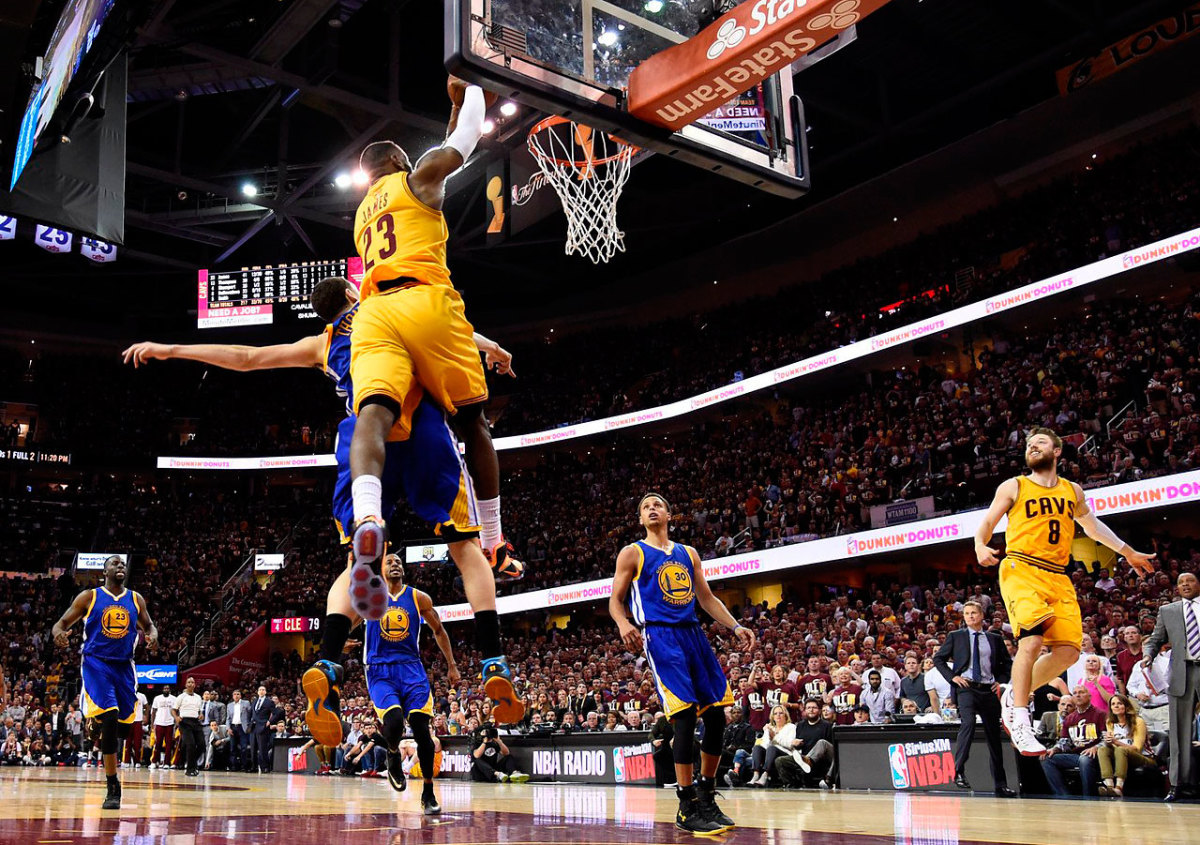
LeBron James converted this alley-oop pass from Matthew Dellavedova (far right) for a pivotal basket in the fourth quarter.
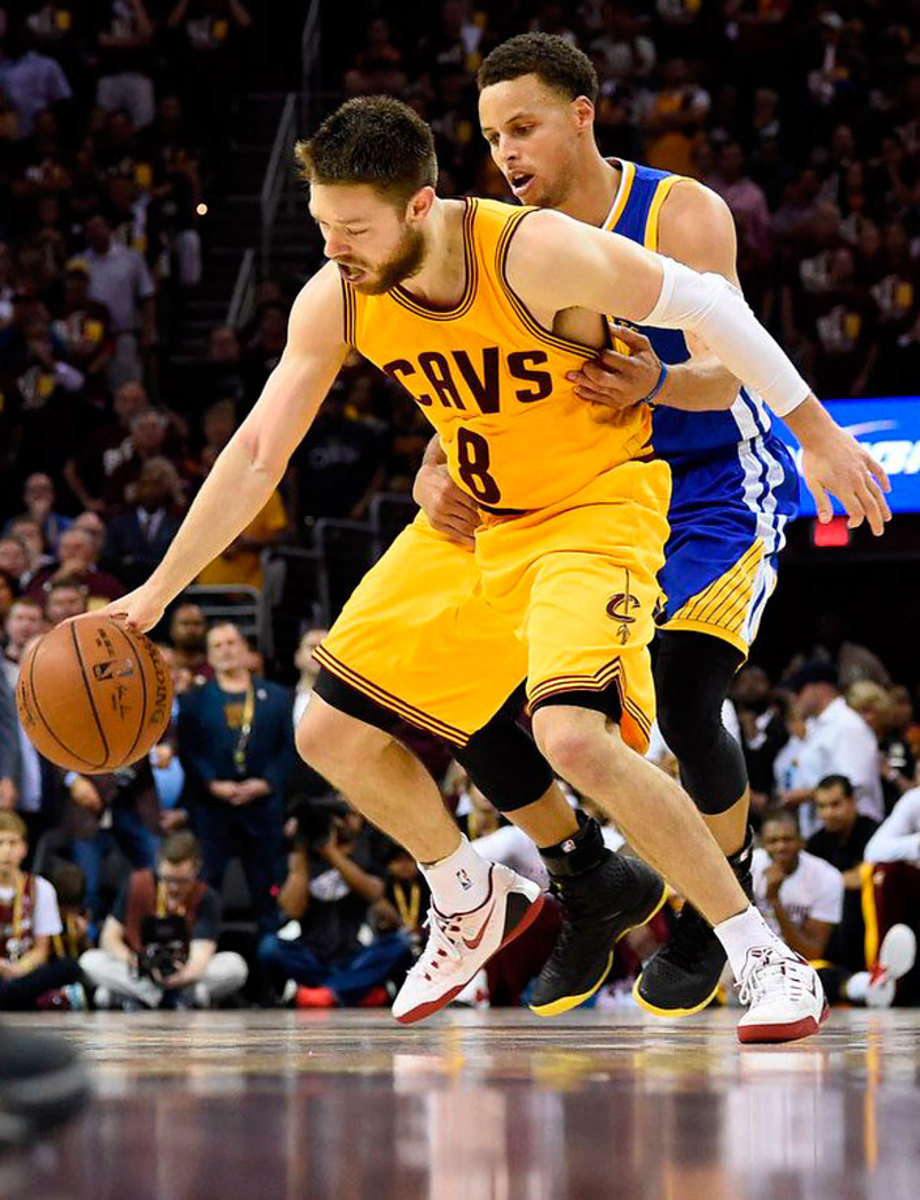
Despite Steph Curry's attempt to hold Matthew Dellavedova back, the Cavs guard kept driving toward the basket on this play and hit a circus shot off the glass and drew a foul.
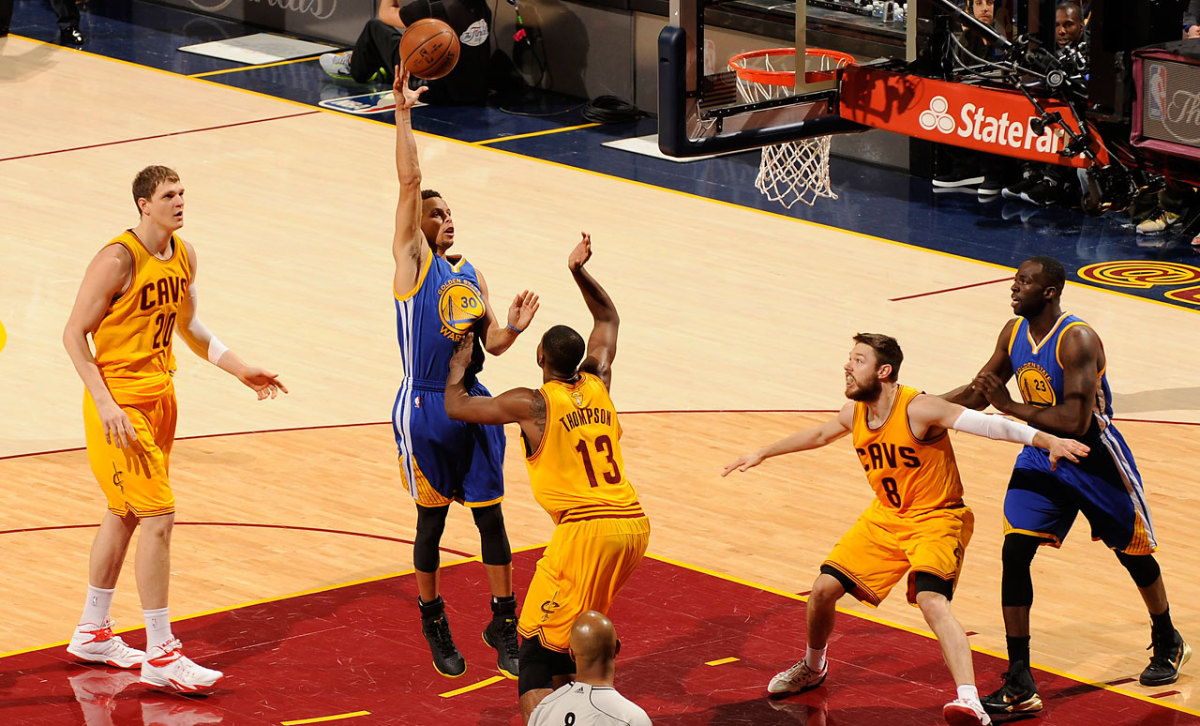
Steph Curry found his shooting touch in the fourth quarter, scoring 17 points as the Warriors, who trailed by 20 in the third quarter, refused to go away. (Text credit: AP)
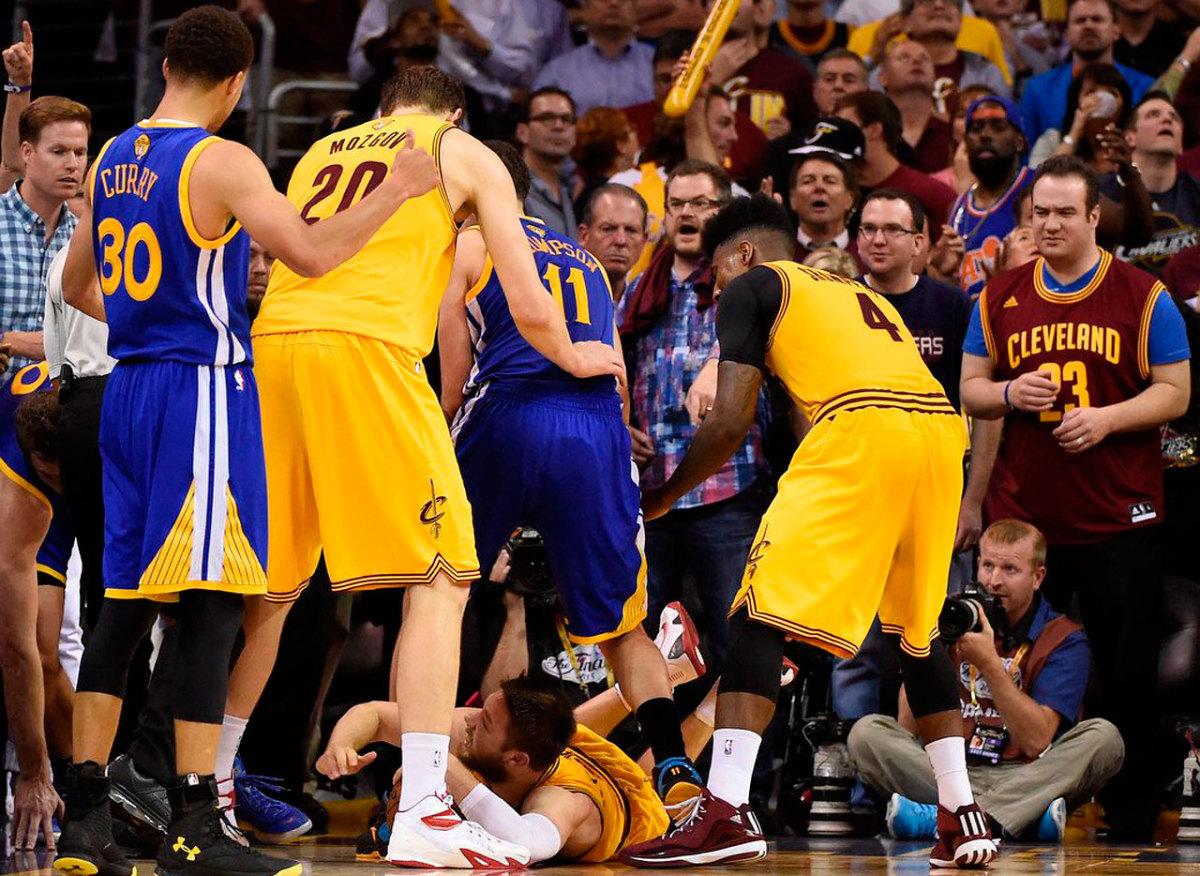
Matthew Dellavedova dove to the floor for a loose ball ahead of the Warriors.
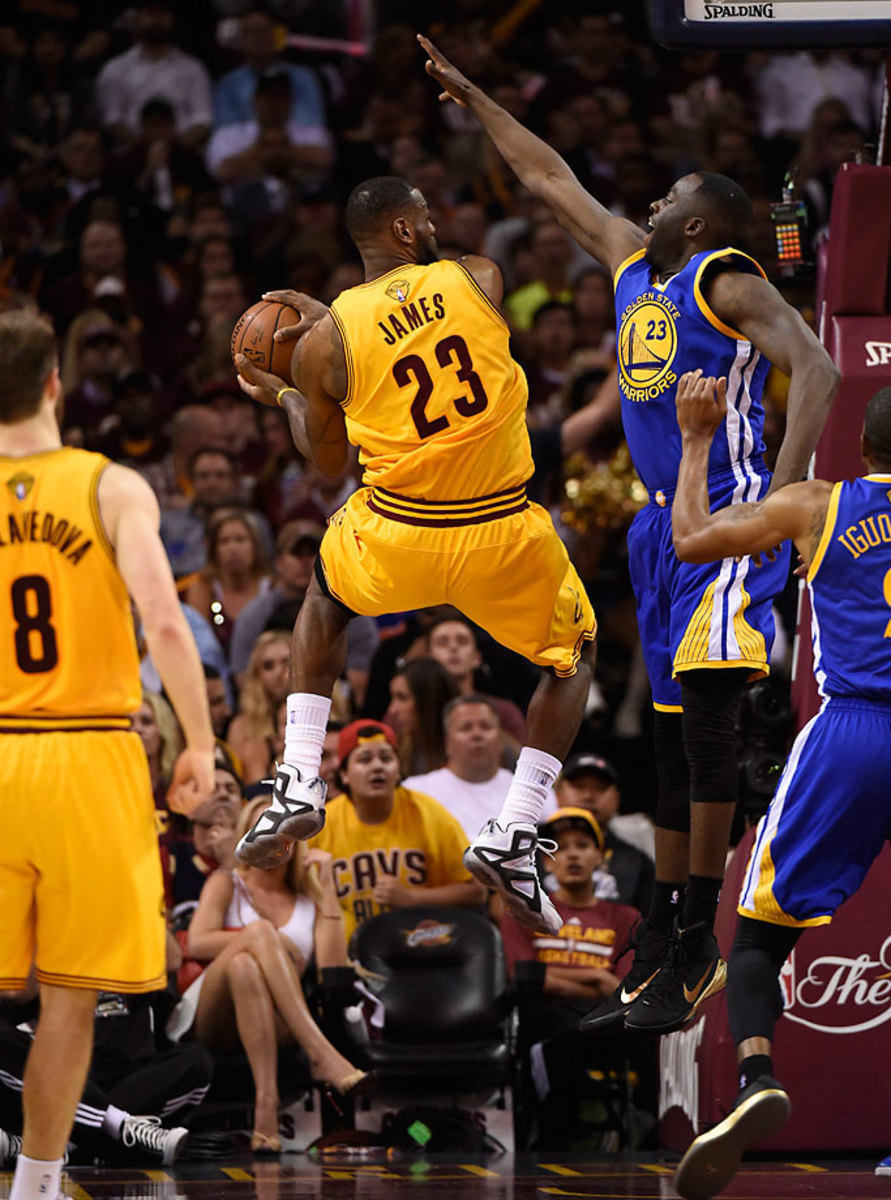
LeBron James finished with 40 points, 12 rebounds and eight assists in 46 minutes.
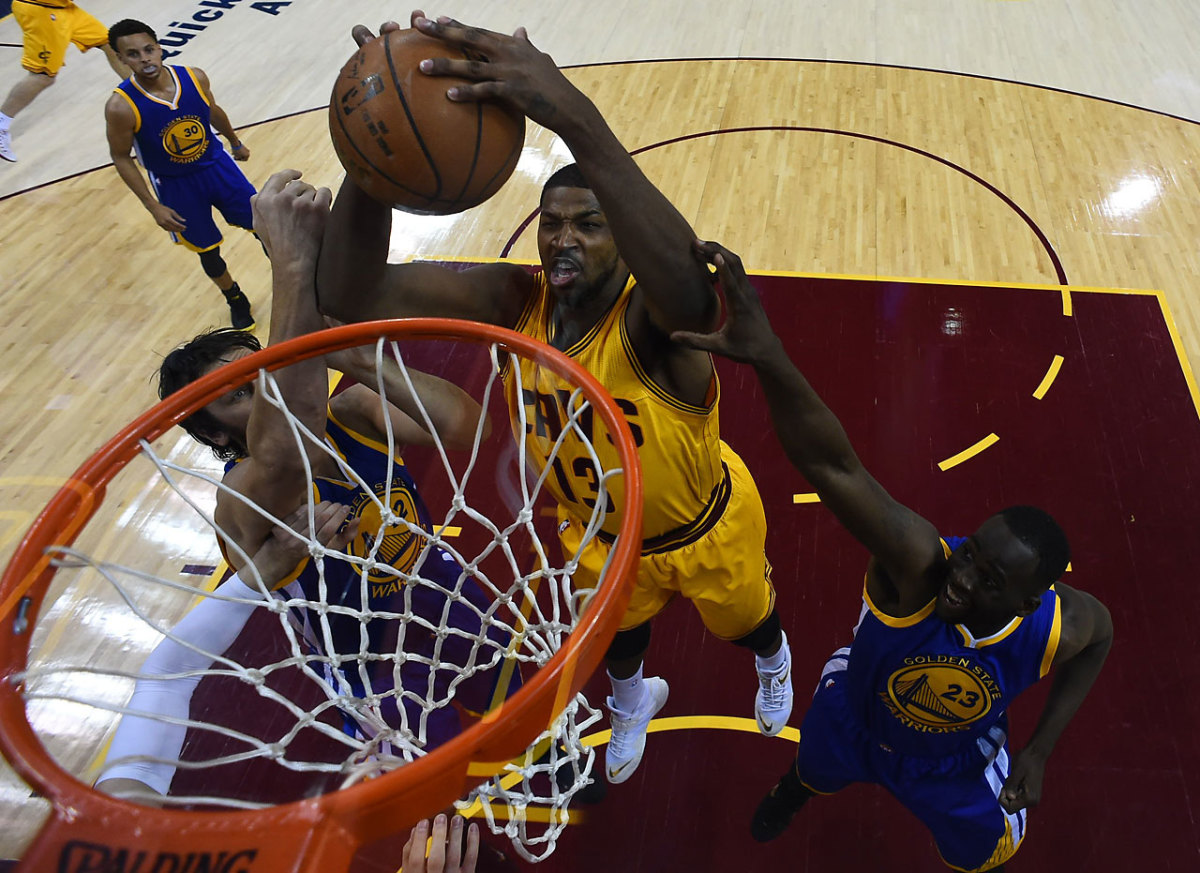
Tristan Thompson scored 10 points and had 13 rebounds for Golden State.
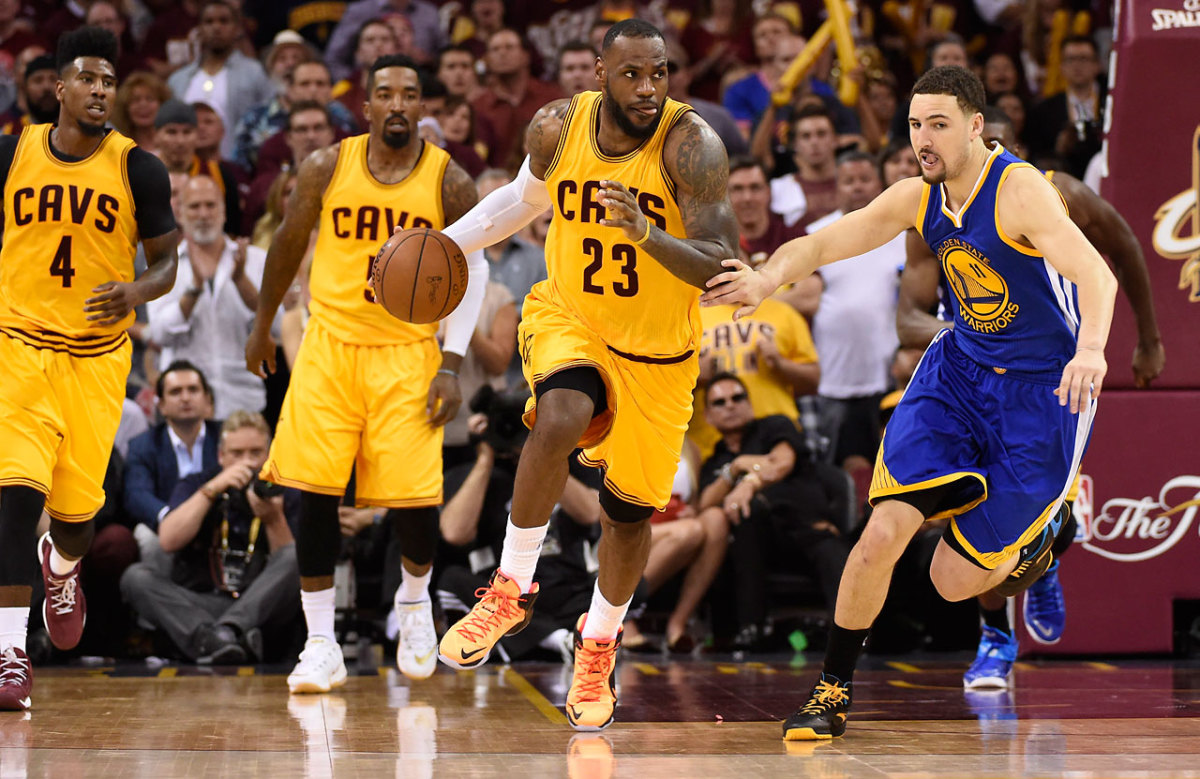
LeBron James has scored 123 points in the series, the most ever scored by a player through the first three games of the Finals.
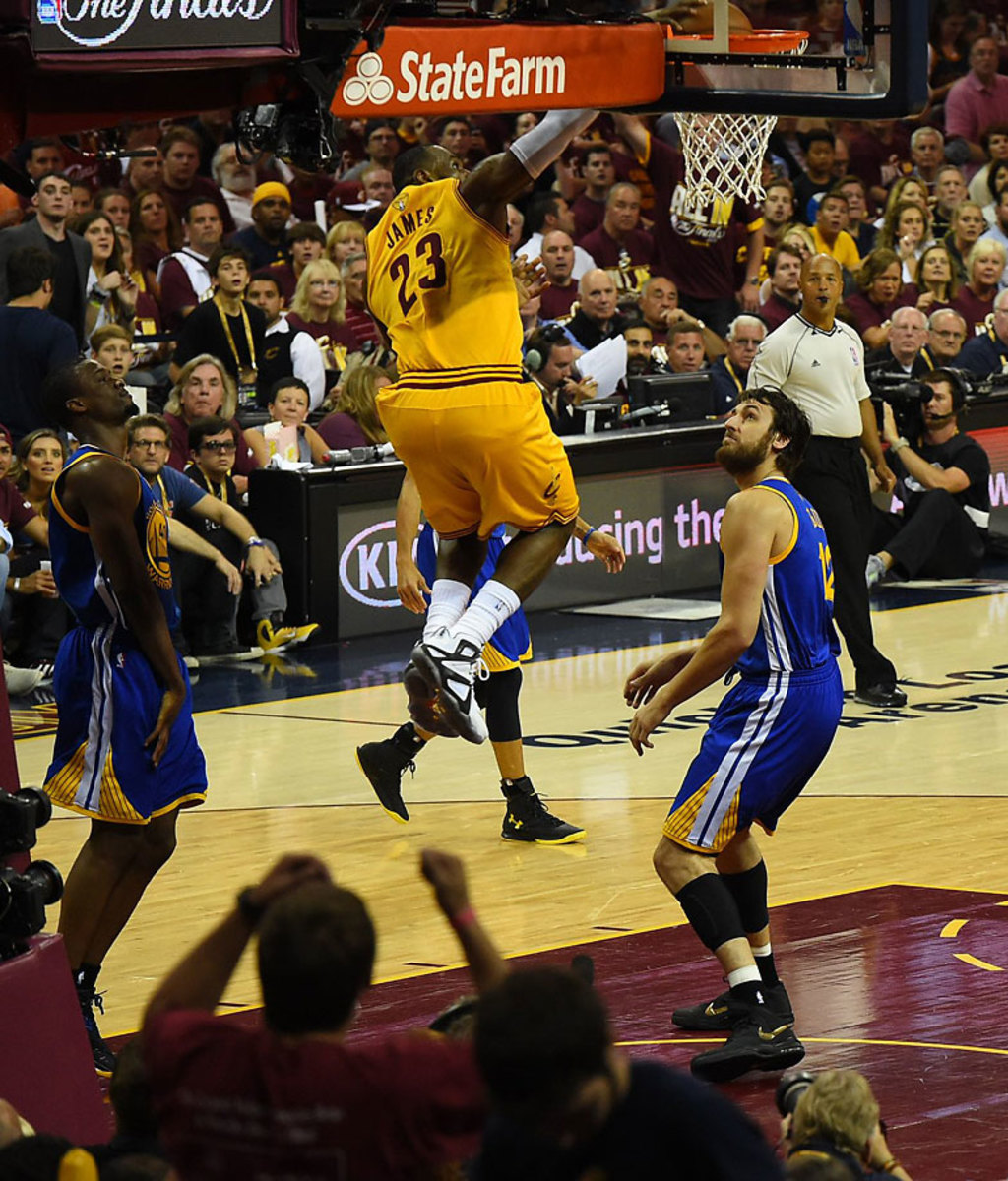
LeBron James threw down a monster dunk in the first half.
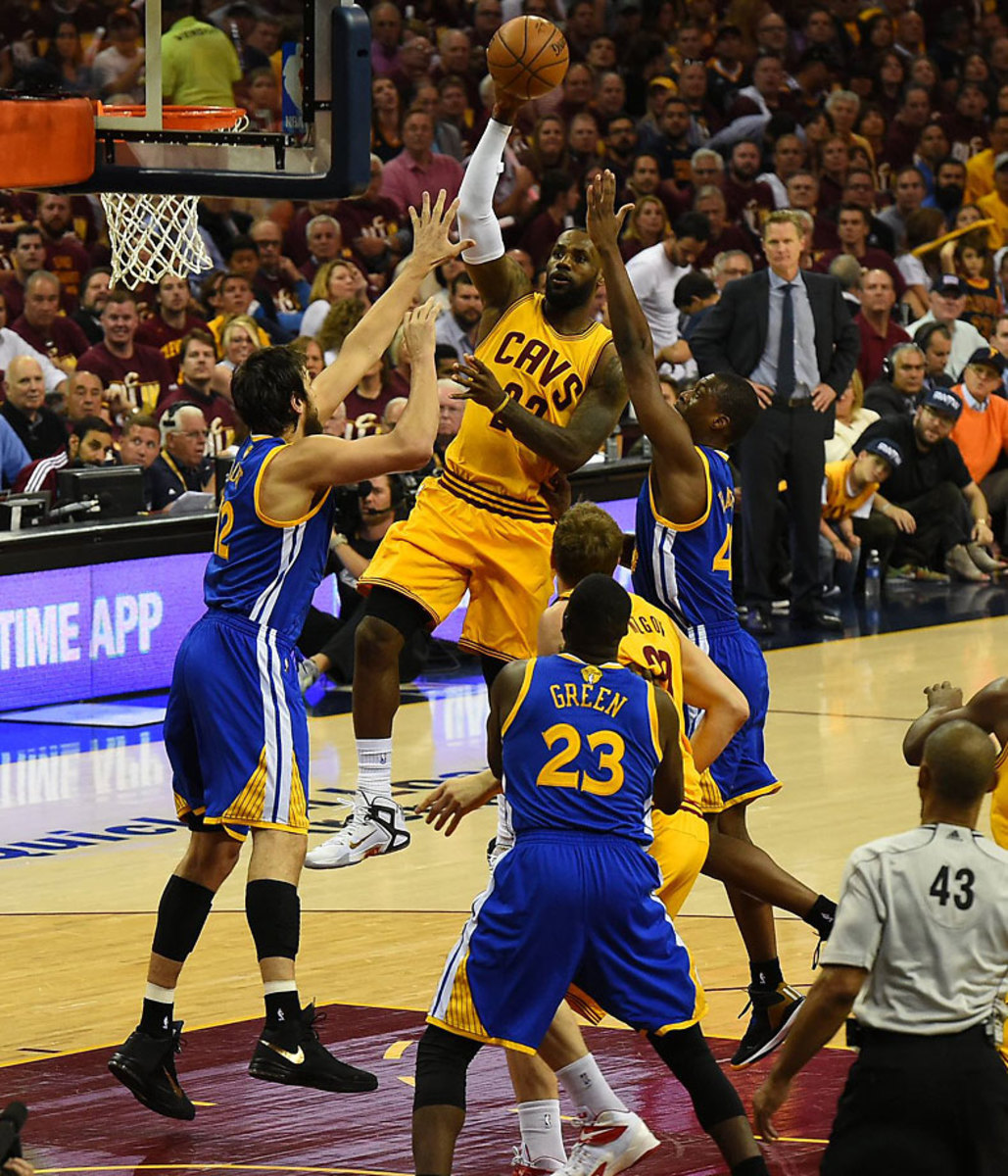
LeBron James's 40-point effort followed 44-point and 39-point efforts in Games 1 and 2, respectively.
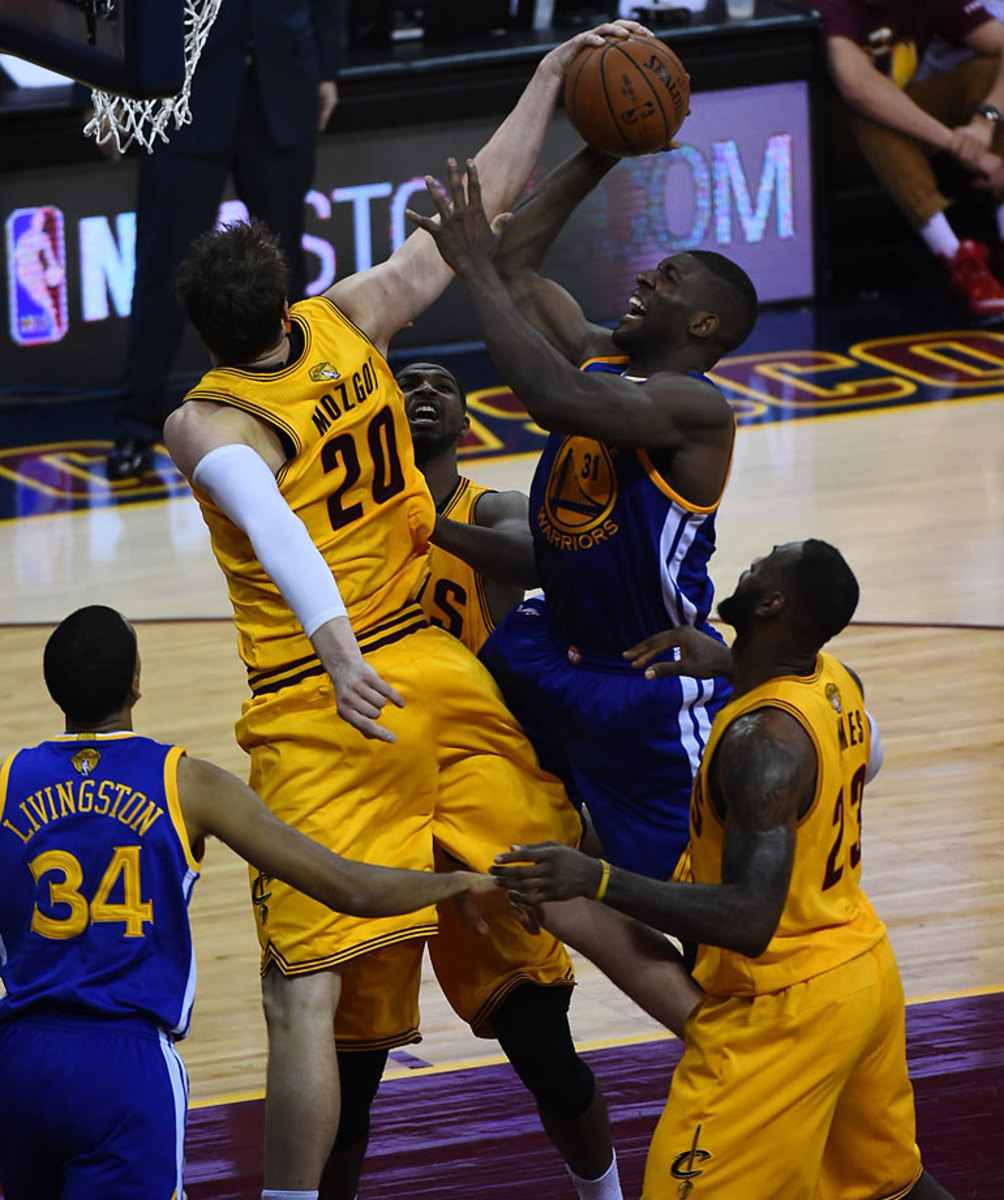
Timofey Mozgov blocks a shot by Festus Ezeli.
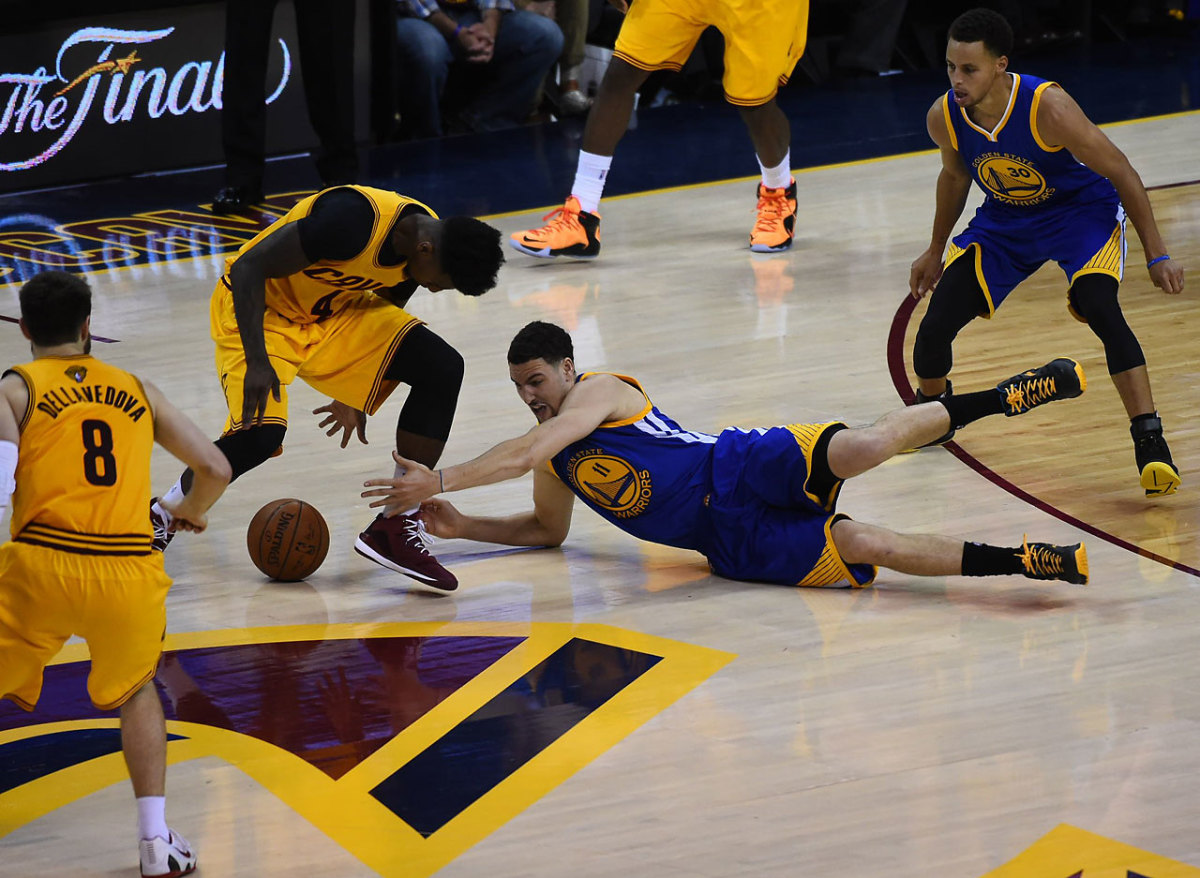
The Warriors' Klay Thompson attempts to grab a loose ball.
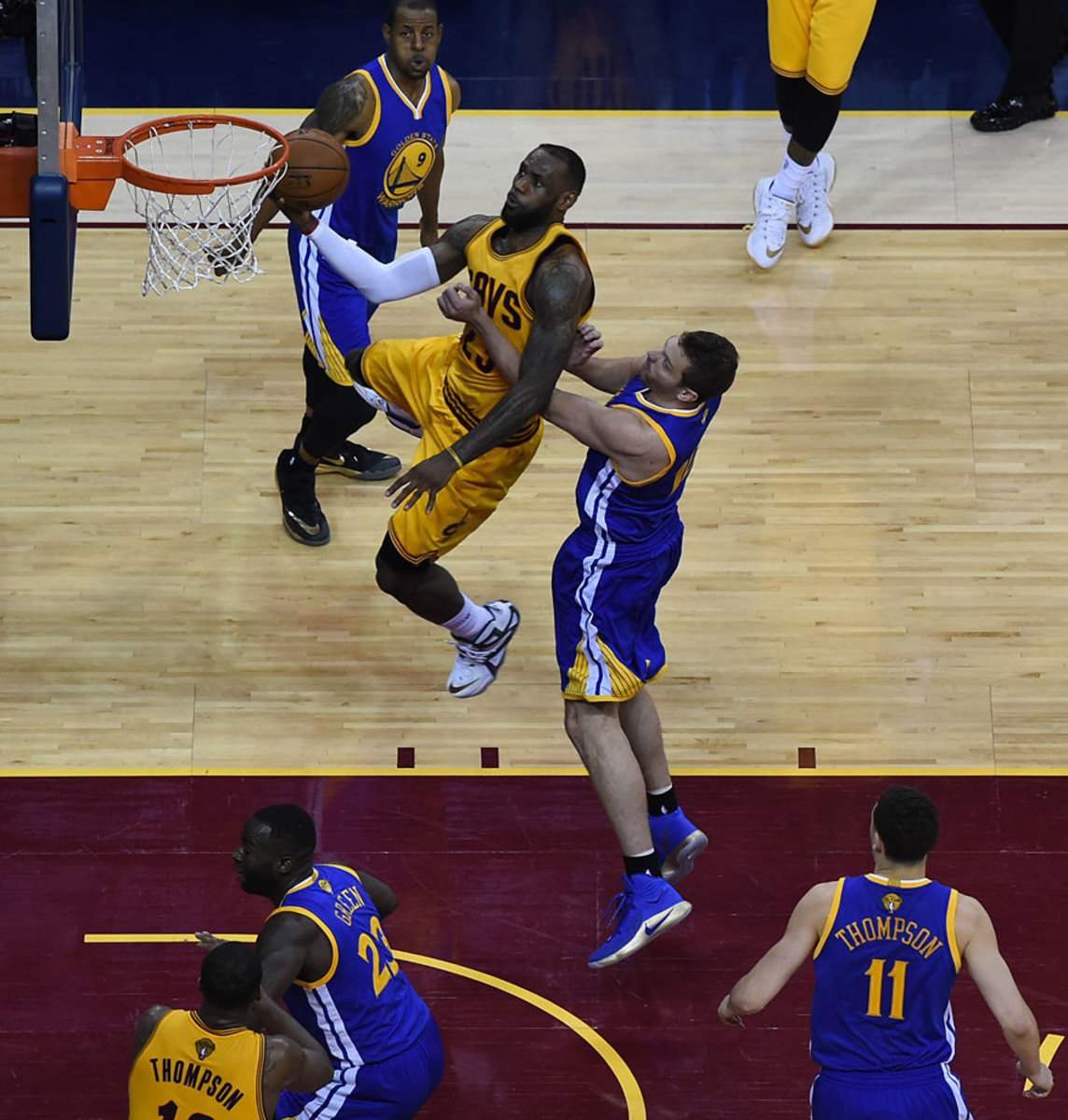
LeBron James attempted 34 shots in his 46 minutes on the floor.
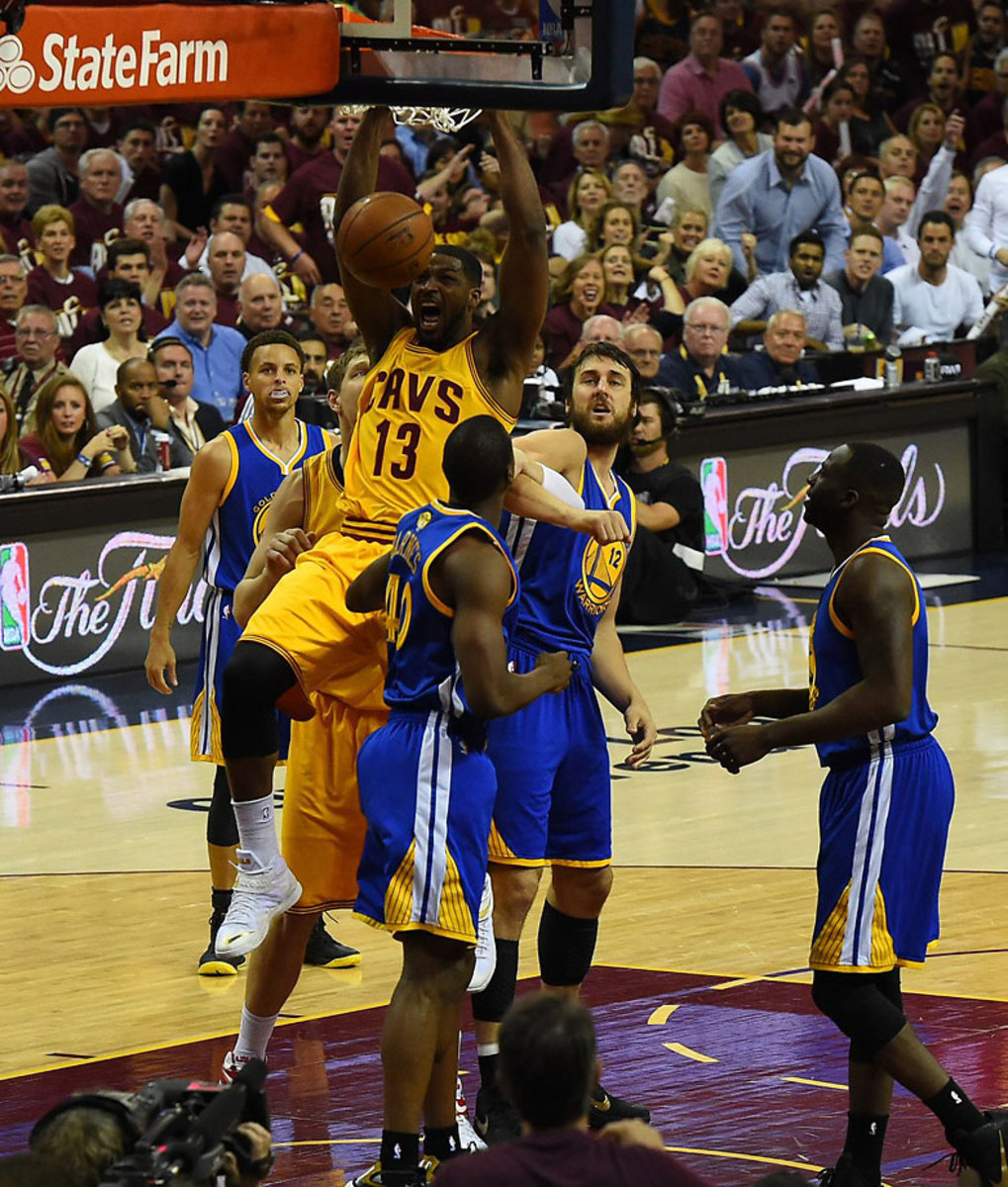
Tristan Thompson makes an emphatic finish on an easy basket.
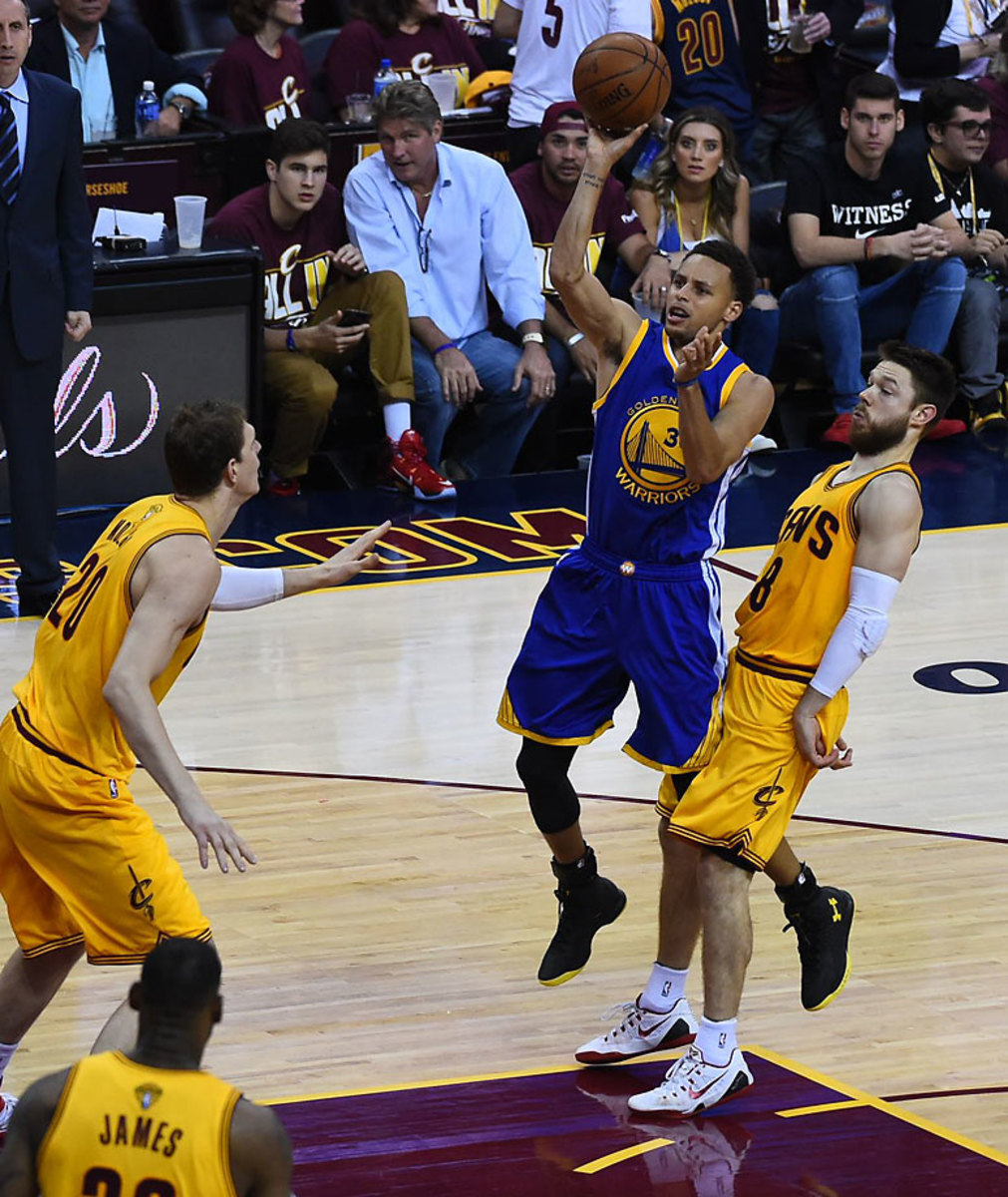
Steph Curry scored only three points in the first quarter on 1-of-6 shooting and had only 10 at halftime.
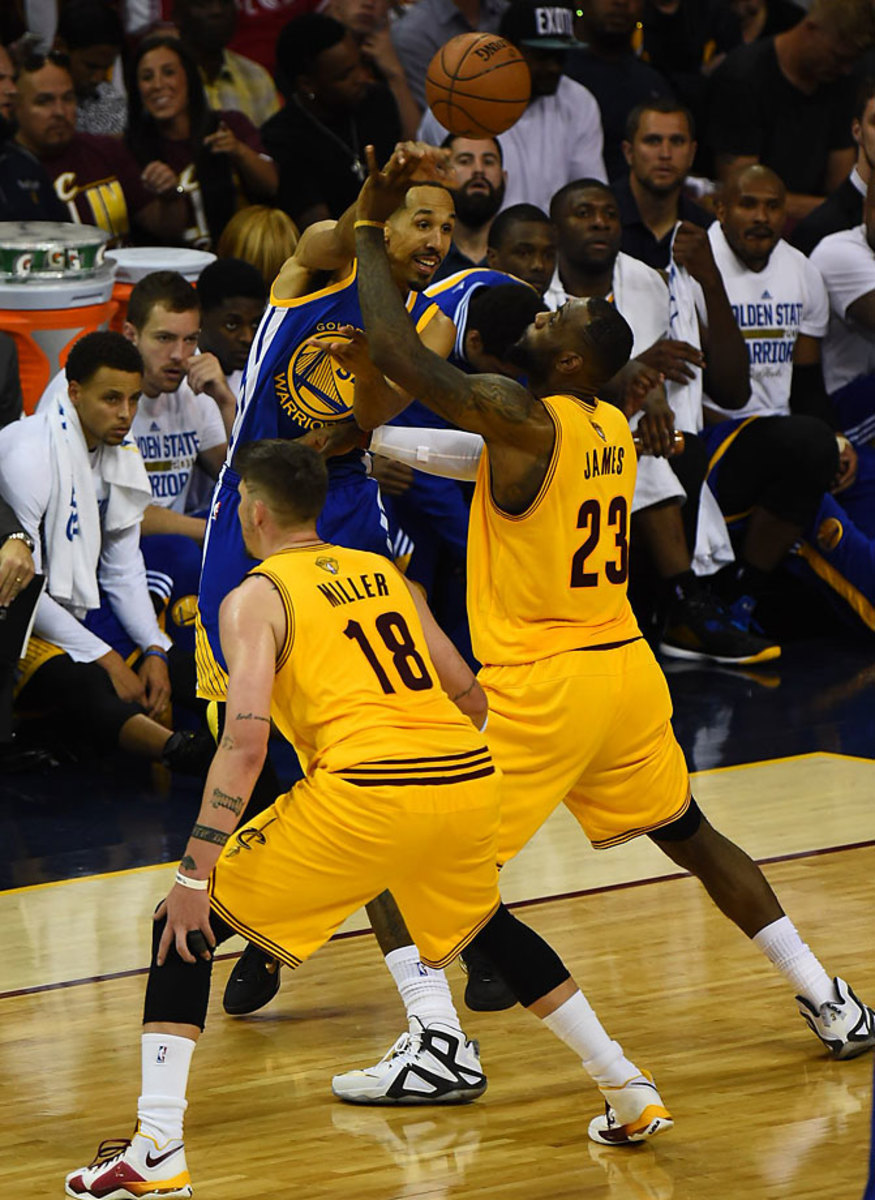
Cleveland held the NBA's highest scoring team to a measley 37 points in the first half.
